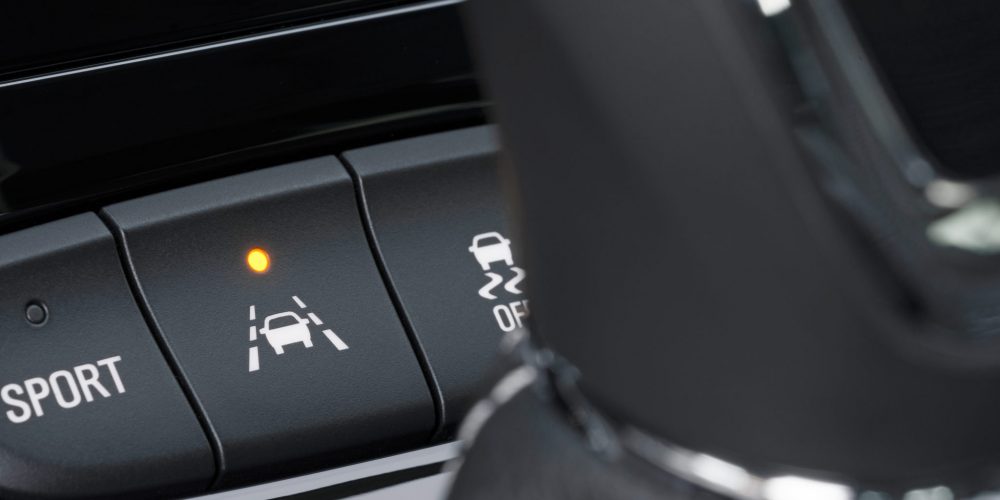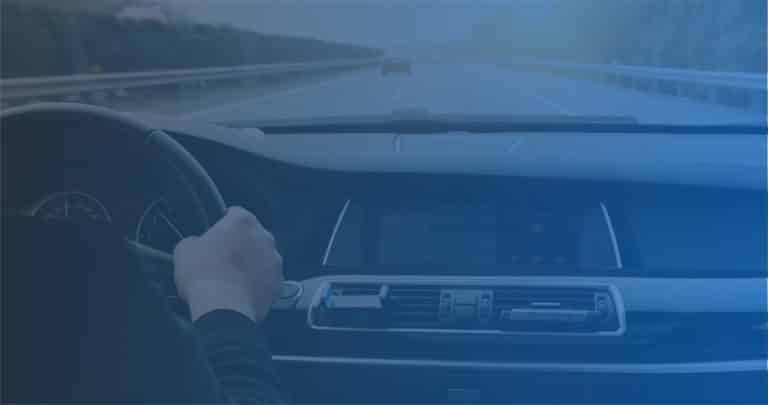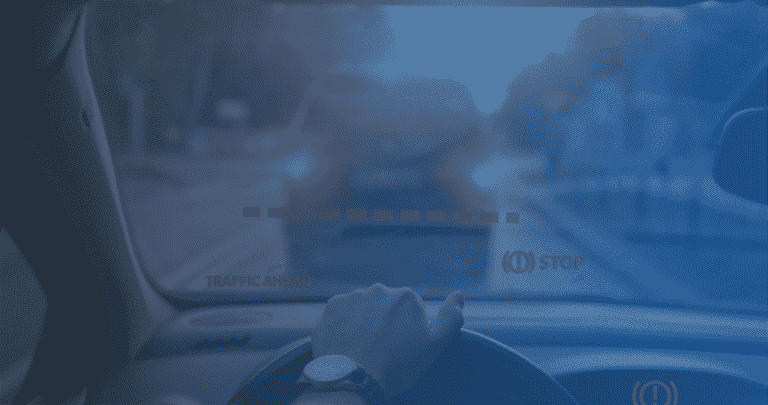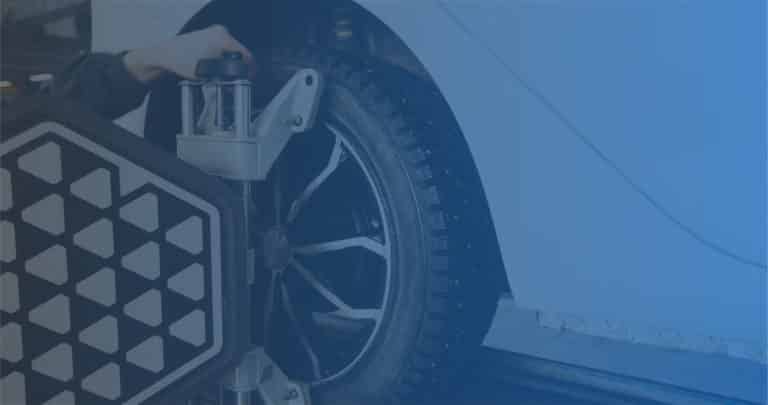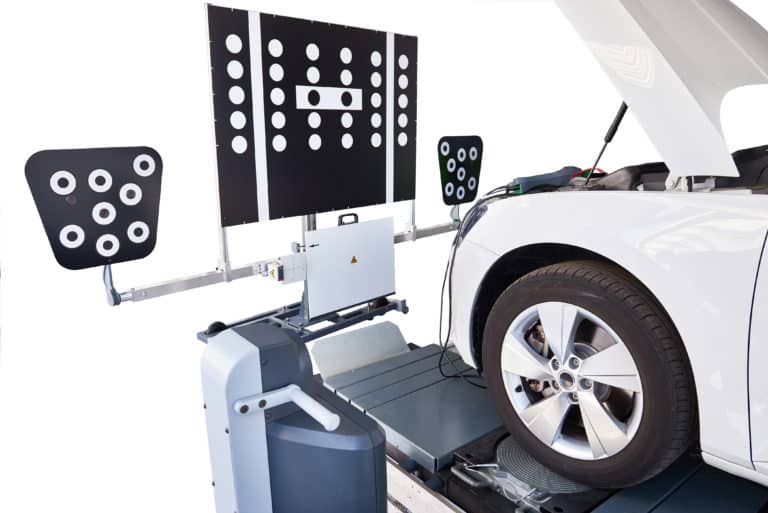What is LDW in a car?
Lane departure warning (LDW) can save lives. For best results, drivers and auto technicians need to understand how lane departure works, and how to keep it working optimally. In this article, we will explain lane departure warning systems and how they work, show a few applications on the road today, and discuss LDW calibration best practices.
What is Lane Departure Warning?
Lane Departure Warning is an advanced driver assistance system (ADAS) found in many newer vehicles. It warns drivers when they are leaving their lane unexpectedly.
When cars leave the roadway unexpectedly, crashes occur — and they can be deadly. There were more than 1.9 million single-vehicle crashes in the United States in 2018. Of those, 57% were related to road departures, out of which, there were 339,000 injuries and nearly 12,000 fatalities.
LDW has the potential to reduce single-vehicle, sideswipe, and head-on crashes by 11%. And, when these types of crashes occur, LDW reduces injury occurrences by 21%.
LDW is becoming more common in the auto industry. Some manufacturers even offer it as a standard feature on many models. As the ADAS industry advances, consumers and technicians should expect to see LDW more often. They should also know how to handle it.
How does Lane Departure Warning Work?
So, how does lane departure work? A vehicle’s lane departure warning system uses forward-facing cameras mounted on the windshield, near the rearview mirror. Cameras monitor lane markings. If the vehicle starts to leave the marked lane while the turning signal is off, the system alerts the driver. A lane departure alert can be an audible alert, a dashboard indicator, or a seat or steering wheel vibration.
Lane Departure Warning Technology Variations to Know
In the vein of lane departure warnings, there are a few similarly named systems. But, they are very different: The car temporarily takes over to assist the driver via automatic braking or steering.
- Lane Departure Warning (LDW) — Audible, visual, or rumble warnings when the car goes over or is nearing lane the lane boundary, when the driver hasn’t activated the turning signal.
- Lane Keeping Assist (LKA) — Adds to LDW system capabilities, applying automatic braking, steering, or both to keep a car within lane and road markings.
- Lane Centering Assist (LCA) — Focuses on keeping a vehicle centered in its traveling lane, applying automatic steering, braking, or both.
- Road Departure Mitigation (RDM) — Applies visual and audible LDW to alert the driver. If no steering correction is applied, steering torque is used to keep the car in the intended lane. If needed, braking may be applied to keep the car on the roadway.
3 Real Examples of Cars with Lane Departure Warning
Within the automotive industry, ADAS naming is still not standardized. Each OEM has its own system and they vary between models. Additionally, each new model year brings new advances. Lane assist and warning systems are known by diverse names and features are often bundled into larger ADAS tech packages.
Here are a few real-world examples of lane departure warning systems out on the road.
Subaru EyeSight Lane Departure, Sway Warning, and Lane Keep Assist
Subaru’s EyeSight package comes standard on the 2021 Forester, Legacy, Outback, and Ascent models. It’s available as an upgrade on most other models. The EyeSight system includes Lane Departure and Sway Warning with Lane Keep Assist. Here’s how Subaru explains it in an instructional video:
“As you’re driving, it watches for lane markings to detect if you are drifting. Lane Departure Warning can alert you before you leave your lane without signaling. And with Lane Sway Warning, EyeSight can alert you if you begin to sway. If you don’t correct quickly enough, the Lane Keep Assist feature can even intervene and help steer you back in.”
Audi Active Lane Assist
Audi Active Lane Assist is offered on most models. Here’s how Audi describes this system:
“Operating at speeds from 65 km/h (40.4 mph), Audi active lane assist helps the driver keep the vehicle in the driving lane. A camera detects lane lines and the track that the car is following between them. In this process, the camera can distinguish between yellow lines in construction zones and standard white markings. If the car approaches a line without the turn signal being activated, the system helps the driver to steer back into the lane by means of gentle but noticeable interventions in the electromechanical power steering. In the MMI system, the driver sets how early the control intervention should occur. In the case of an early steering intervention point, the system guides the driver towards the middle of the lane by gentle, centering steering interventions. With a late steering intervention point, Audi active lane assist does not intervene until shortly before the detected lane marking might be crossed; then it gives a corrective steering intervention in the proper direction. In addition, the driver may choose to be warned by a vibration of the steering wheel when crossing detected lane markings.”
Honda Lane Departure Warning
The Honda CR-V Lane Departure Warning is part of the Honda Sensing technology package. Here’s how honda explains it:
“[LDW] uses a windshield camera to visually detect lane lines in the road. If the driver begins to drift out of a detected lane without using the turn indicators, the system will alert the driver with an icon in the instrument panel and an audible warning, though the driver remains responsible for safely operating the vehicle and avoiding collisions.”
Road Departure Mitigation (RDM) takes it a step further, as the CR-V info page explains:
“[RDM] employs the windshield-mounted camera also used by LDW to identify the side of the road, including painted lane lines, Botts’ Dots and cat’s-eye markers. When the system detects that the vehicle is about to leave the road, it alerts the driver with [a] warning message. The system is designed to then use the electric power steering system to guide the vehicle back into its detected lane or to apply the brakes to keep the CR-V from leaving the roadway altogether.”
Lane Departure Calibration
By decreasing unintentional lane departures, lane departure warning systems can lower crash rates by an estimated 26%. But, when a crash does occur, ADAS sensors need to be re-calibrated. In the case of lane departure calibration, forward-facing cameras need special attention to ensure that they are operating correctly to deter future crashes. In many cases, a lane departure system will provide the driver with a notification that the system isn’t fully functional. When you see one of the following messages about your LDW system, your car likely needs recalibration:
- Service lane departure system
- Lane keeping assist inoperative
- Lane keeping system malfunction
- Lane departure warning not working
- Calibrate lane departure warning
- Lane departure alert malfunction
- Lane departure warning failure
While it’s important that drivers bring their cars in for repairs and calibrations, it’s also essential that repair technicians know when a vehicle needs calibration. LDW and lane-keeping systems are generally powered by windshield-mounted forward-facing cameras. If a vehicle is in a collision or has a new windshield installed, the LDW camera needs to be recalibrated, so that it is aimed at a precise part of the road. If this ADAS calibration isn’t done, warnings and steering/speed interventions can happen at the wrong time.
Required calibrations for forward-facing ADAS cameras can be static, dynamic, or both, depending on the OEM and model. Whether static or dynamic, calibration procedures require trained specialists and ADAS calibration equipment. Static procedures require aiming at a special target(s), using a scan tool to re-align the cameras. Dynamic calibration requires driving the car, often while connected to a scan tool.
Knowing when and how to properly calibrate ADAS cameras is key to keeping lane keep and departure systems working.
Lane Departure Warning System Responsibilities
Drivers and technicians alike have responsibilities when it comes to lane keep and lane departure ADAS features. Drivers need to know what type of lane assist technology their car has, what to expect, and how to react best when activated. Technicians need to understand when, why, and how to perform calibrations. Proper ADAS calibrations are key to keeping these life-saving systems functioning.
Related article: The Biggest Myth About Advanced Driver Assistance Systems
Car ADAS is the ADAS calibration specialist. Car ADAS calibrates LDW systems and more at its streamlined Salt Lake City National Training Center. Car ADAS Solutions offers ADAS calibration center licensing opportunities. Are you curious about providing lane departure warning system installation? If you are interested in developing a new revenue stream by adding ADAS calibration services, contact Car ADAS for more information.

